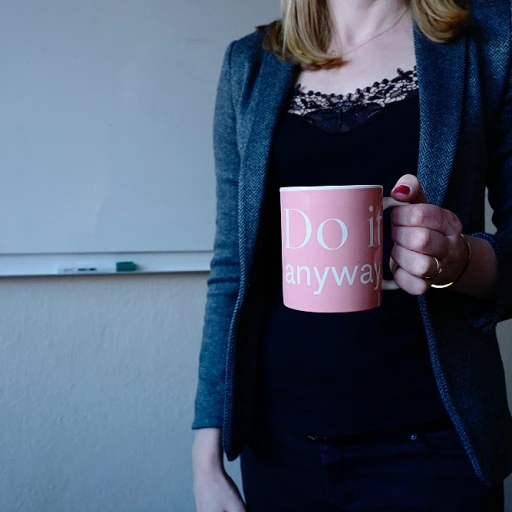Understanding the Importance of Lymphatic Drainage
Exploring the Potential of the Lymphatic System
Understanding the intricate workings of the lymphatic system is crucial for both aspiring and experienced massage therapists. This often overlooked component of the human body plays a pivotal role in maintaining our immunity, detoxifying tissues, and regulating fluid balance. As an essential part of the circulatory system, the lymphatic system helps transport lymph, a fluid containing white blood cells that fight infection, throughout the body. Learning about the significance of lymphatic drainage and manual lymph techniques can unlock new possibilities for those interested in healthcare and wellness. Those enrolled in or seeking to register for lymphatic drainage courses will benefit from a series of modules that delve into the depths of this vital system. Engaging with topics such as manual lymphatic drainage (MLD) and lymph drainage techniques can be transformative for one's practice. Massage therapists focusing on lymphedema management will appreciate the benefits of a full body treatment methodology. This knowledge base eases their ability to tackle patient discomfort, offering relief from swelling and promoting overall body wellness. A certification in MLD provides therapists with specialized skills that can set them apart in the competitive field of holistic health and wellness. For those intrigued by the thought of such manual interventions, it’s essential to consider how a certification course not only improves proficiency but also opens doors to continuing education opportunities. Those who commit to mastering these techniques will learn to integrate them effectively into their practice, enhancing the therapeutic experience for their clients. Recognizing the value and influence of such courses can encourage more professionals to explore lymphatic drainage as part of their ongoing education and skill enhancement. For more insights into enhancing skills across diverse fields, don't miss our post on enhancing skills with free templates which provides further perspectives on upskilling opportunities.Benefits of Learning Lymphatic Drainage Massage
Unlocking the Potential of Lymphatic Drainage Massage
Learning lymphatic drainage massage offers numerous advantages, making it a valuable skill for massage therapists and wellness practitioners. This specialized technique, often referred to as Manual Lymphatic Drainage (MLD), is designed to support the lymphatic system, which plays a crucial role in the body's immune function and fluid balance.
By enrolling in a lymphatic drainage course, you will learn how to perform a full body treatment that aids in reducing swelling, detoxifying the body, and promoting relaxation. This practice is particularly beneficial for individuals dealing with lymphedema, as it helps manage the condition effectively.
Enhancing Your Professional Practice
Adding lymphatic drainage skills to your repertoire can significantly enhance your practice. As you master the Vodder technique and other methods taught in the certification course, you will be able to offer your clients a comprehensive treatment option that complements other massage techniques.
- Certification and Credibility: Obtaining a certification in MLD not only boosts your credibility but also opens doors to new opportunities in the wellness industry.
- Client Satisfaction: Clients seeking relief from conditions like lymphedema or those interested in detoxification will appreciate the specialized care you provide.
- Continuing Education: Engaging in ongoing education ensures you stay updated with the latest advancements in lymphatic drainage techniques, keeping your skills sharp and relevant.
For those looking to enhance their skills further, exploring additional resources in the wellness sector can be beneficial. Consider enhancing skills in the pharmaceutical sector to broaden your understanding of health and wellness.
Finding the Right Lymphatic Drainage Massage Classes
Choosing the Perfect Class for Your Growth
When embarking on the journey to master lymphatic drainage massage, finding the right classes can be pivotal to your success. A quality course provides a strong foundation in the principles of manual lymphatic drainage (MLD), the techniques for effective treatment, and the skills needed for practical lymphedema management. For starters, consider whether you prefer an online learning experience or in-person sessions. Some courses require physical attendance, which allows for hands-on practice on a massage table, while others offer flexible online modules that accommodate busy schedules. Evaluate what suits your lifestyle best. Next, delve into the curriculum offered by different classes. A comprehensive series will cover essential topics, such as:- Anatomy of the lymphatic system and its roles in health
- The vodder technique used in lymph drainage
- How to conduct a full body drainage treatment
- Strategies for dealing with lymphedema
- Practicing safe and effective MLD techniques
What to Expect in a Lymphatic Drainage Massage Course
Getting Acquainted with Your Learning Journey
Embarking on a lymphatic drainage massage course is a commitment to expanding your knowledge and skills in an ever-important area of healthcare and wellness. But what exactly can you expect in such a course? Here's a closer look. First off, whether you're taking an online class or attending sessions in-person, these courses are designed to provide a comprehensive understanding of the lymphatic system and how manual lymph drainage techniques can be applied to benefit both personal health and professional practice. Students will usually be welcomed into the course with foundational materials and an introduction to the theory behind lymphatic drainage, including the physiological benefits and therapy applications. You'll dive deep into understanding how lymph drainage aids in treating conditions like lymphedema. As you progress, expect a series of hands-on learning experiences. The practical sessions are typically conducted on a massage table, where participants will practice the gentle and rhythmic hand movements characteristic of the Vodder technique. Mastering the manual lymphatic drainage technique is a core component, which not only focuses on the full body treatment but also highlights the nuances in treating various body regions. Participants will also familiarize themselves with the intricacies of setting up a manual lymph drainage session, ensuring proper hygiene and client comfort at all times. Expect to explore the massage therapist's role deeply, as this knowledge becomes crucial when you're working with clients who require focused lymphedema management. Engaging in a lymphatic drainage certification course doesn't just end with gaining practical skills. It encompasses continuing education opportunities and offers pathways to achieve certification MLD. By the end of the course, you will receive a massage certification that attests to your capability in performing these sophisticated techniques. Finally, learners will gain insights into integrating these practices into their existing professional setup, thereby enhancing the range of services offered. The class will also offer tips on efficiently incorporating lymphatic drainage into an effective day-to-day practice. You'll leave the course with a comprehensive understanding and the confidence to add this vital skill set to your portfolio.Challenges and Solutions in Mastering Lymphatic Drainage Techniques
Overcoming the Difficulties in Mastering Manual Lymphatic Techniques
Embarking on a journey to master lymphatic drainage massage can be both rewarding and challenging. Understanding the importance of lymphatic drainage is crucial, yet achieving proficiency requires dedication and perseverance. Here, we explore some common challenges and their solutions for those undertaking a certification course in this specialized field. Firstly, the intricate nature of lymph drainage techniques requires a deep understanding of the human lymphatic system. Because it is not as straightforward as other forms of massage, dedicated study involving both online and manual instruction is essential. Often, students find themselves overwhelmed by the complexity of the techniques, such as the Vodder technique. To address this, participating in a series of structured classes where you will learn step-by-step methods is highly recommended. Whether in person or through an online course, ensure the curriculum covers full body lymphatic drainage. Another challenge is the physical aspect of practicing these techniques. Manual lymphatic drainage is a hands-on practice, and it demands meticulous application of pressure and precision on the massage table. Regularly practicing on different body types can help improve proficiency over time. Engagement in practical sessions during the class will hone your skills in delivering effective treatments. Additionally, understanding how to incorporate lymphatic drainage into your current practice as a massage therapist can be daunting. Balancing your existing techniques with new skills is essential for seamless integration. Continual practice and integration techniques, discussed in courses, facilitate meshing these skills with your practice. Moreover, staying updated with continuing education to further refine your skills is invaluable, especially for certifications like the MLD. Finally, managing emotional connections with clients who suffer from conditions like lymphedema presents its own set of challenges. Developing empathy and understanding client needs are part of what makes a successful practitioner. Overcoming these emotional hurdles starts with grasping the full range of benefits of lymphatic drainage treatments, allowing therapists to provide compassionate, effective care. In summary, while the path to mastering lymphatic drainage techniques can be fraught with challenges, these can be overcome through structured learning, hands-on practice, and a focused integration strategy. By tackling these difficulties head-on, professionals can enhance their massage practice and provide significant benefits to their clients.Integrating Lymphatic Drainage Skills into Your Practice
Seamlessly Incorporating Your New Skills into Your Professional Life
Integrating lymphatic drainage massage skills into your practice can significantly enhance the range of services you offer. Once you've completed a course and earned your certification, it's time to apply what you've learned to real-world scenarios. The well-rounded knowledge you've gained about techniques such as manual lymphatic drainage and the Vodder technique can provide substantial benefits to your clients.- Expanding Services: Whether you're working in a spa, wellness center, or clinical setting, lymphatic drainage can complement existing treatments. This manual technique is especially beneficial for clients dealing with lymphedema, improving lymph circulation and reducing swelling.
- Customizing Treatments: A full body manual lymphatic drainage treatment can be tailored to each individual's needs, offering personalized care that wasn't possible before. With this skill, you can address specific concerns like post-surgical swelling or enhance athletic performance recovery.
- Enhancing Client Experience: Providing lymphatic drainage massage as a part of your service menu can attract clients seeking specialized treatments. Educating clients about the benefits and effectiveness of these techniques can build trust and long-lasting professional relationships.
- Continuous Learning and Education: Remember, the field of lymphatic massage continues to evolve. Staying updated through continuing education will not only refine your technique but also assure your clients of your commitment to offering the best care. Engaging in online courses and manual updates will keep you at the forefront of the industry.
- Building Professional Credibility: Completing a well-recognized certification MLD and receiving a reputable manual is a testament to your expertise. Sharing your accomplishments, whether through word of mouth or professional networking platforms, can boost your profile in the community of massage therapists.







